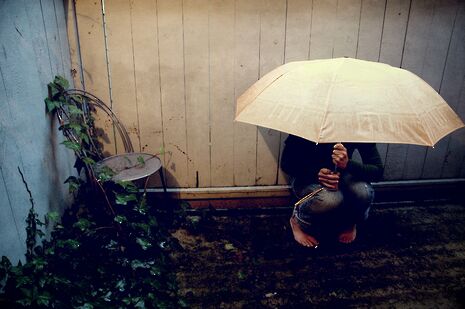Seasonal Affective Disorder
Shalin Abraham discusses this fascinating but poorly understood psychiatric condition

We are all familiar with feeling better when the weather is pleasant, and slightly down in the depths of winter, but what if your daily routine was significantly affected by low mood and energy levels? This is the reality for sufferers of seasonal affective disorder (SAD), a form of depression that correlates with the change in seasons. It is more prevalent away from the equator, where there are more significant changes in light levels and weather.
Most people associate SAD with winter, hence its common nickname, ‘the winter blues’, but it can occur in the summer too. In the most recent editions of the Diagnostic and Statistical Manual of Mental Disorders (the psychiatric diagnosis standard), the opinion on SAD has changed. It is now not considered a condition in its own right, but is a sub-specifier of recurrent major depressive disorder, with a seasonal pattern in the absence of other psychosocial stressors. The depression is characterised by lethargy impacting on one’s daily routine, sleep problems during the night, craving for carbohydrates leading to weight gain, loss of libido, irritability and concentration.
There are multiple theories regarding the cause of SAD, and though there is a correlation between low mood and reduced light levels, this does not suggest a causal relationship. Melatonin is a hormone produced by a part of the brain called the pineal gland which responds to light levels, and it regulates our sleep-wake cycle. Melatonin is produced when we sleep and it ceases to be produced when we wake up. Some studies show that melatonin levels are increased in SAD sufferers (as occurs in hibernating animals), but whether this is due to abnormal production or altered light sensitivity is uncertain.
When light hits the back of the eye, signals are sent to the hypothalamus, which regulates appetite, temperature, sleep and libido. It is possible that hypothalamic function is reduced in SAD patients, maybe partially due to altered connections within the eye, which cause bodily functions to grind to a halt. Another chemical in the brain, serotonin, which regulates mood, has also been found to have reduced function in patients with winter SAD. The brain controls the circadian rhythm (the biological body clock) and these rhythms were found to be more elastic and irregular in those believed to suffer from SAD, with fewer peaks. When the body clock slows down, it can become out of phase. Evidence has shown that this can be worsened by reduced daylight, colder weather and ageing.
More severe SAD can be treated with anti-depressants – usually ones which increase serotonin levels in the brain. The recommended treatment for winter SAD is bright light therapy, which involves exposure to bright light for two to four hours a day. However, the inconvenience of this treatment makes it an unpopular option. Although bright light therapy has been shown to reduce melatonin levels to baseline in SAD patients, whether this contributes to reduced depressive symptoms is not well understood. Sufferers also generally find that exercise, eating well and avoiding stress can alleviate symptoms.
The American comedian Rosie O’Donnell told the world about her battle with SAD in 2007, mentioning ‘inversion therapy’, a controversial treatment which involves lying on a specialised table that can be tilted to various angles. Although the treatment is not scientifically substantiated, it has been used for over 3,000 years and is believed to improve circulation to the brain. Despite the opinion on inversion therapy being mixed, there is no doubt that she raised awareness of the challenges of living with SAD, a mysterious and poorly understood psychiatric condition.
 Comment / Plastic pubs: the problem with Cambridge alehouses 5 January 2026
Comment / Plastic pubs: the problem with Cambridge alehouses 5 January 2026 News / Cambridge academics stand out in King’s 2026 Honours List2 January 2026
News / Cambridge academics stand out in King’s 2026 Honours List2 January 2026 News / Cambridge businesses concerned infrastructure delays will hurt growth5 January 2026
News / Cambridge businesses concerned infrastructure delays will hurt growth5 January 2026 News / AstraZeneca sues for £32 million over faulty construction at Cambridge Campus31 December 2025
News / AstraZeneca sues for £32 million over faulty construction at Cambridge Campus31 December 2025 Interviews / You don’t need to peak at Cambridge, says Robin Harding31 December 2025
Interviews / You don’t need to peak at Cambridge, says Robin Harding31 December 2025









